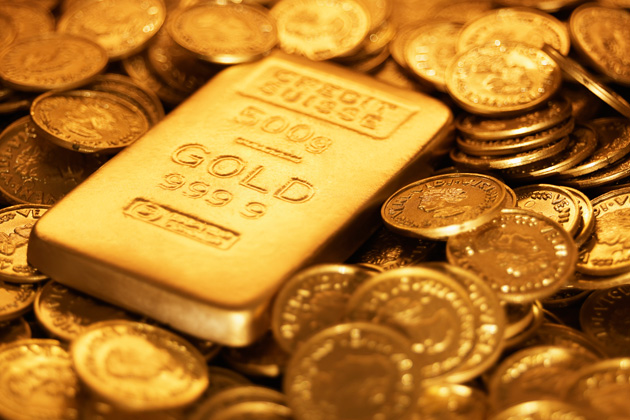Gold prices on Wednesday, February 1, headed south as the dollar improved after healthy U.S. economic reports.
April gold GCJ7, -0.42% fell $10.40, or 0.9%, to $1,201.20 an ounce after trading as high as $1,215.
Prices tracking the most-active contracts rose 5.2% in January, according to FactSet data, which was the strongest monthly performance since June, as the dollar wavered and stocks hit record highs then retreated.
The precious metal added to losses after a reading of manufacturing contributed to optimism about the U.S. economy—usually a negative for gold.
That is the highest level since the end of 2014 and it easily surpassed the 55.3 forecast of economists surveyed by MarketWatch. Readings over 50 indicate economic expansion.
Gold had inched higher in cautious trading earlier ahead of the Fed meeting, which isn’t expected to change rates but could offer clues on the pace of anticipated increases in 2017. The Fed will issue a statement at 2 p.m. Eastern time.
Elsewhere on Comex, March silver SIH7, -0.67% fell 7.8 cents, or 0.4%, to $17.465 an ounce.
It scored a monthly gain of roughly 9.7%. March copper fell by less than a penny, or 0.2%, to $2.721 a pound. April platinum PLJ7, +0.35% tacked on $4.20, or 0.4%, to $1,000.70, while March palladium PAH7, +1.05% edged up by $4.20, or 0.6%, to $758.50 an ounce.
In exchange-traded funds, the SPDR Gold Trust GLD, -0.64% fell 0.6%. The iShares Silver Trust SLV, -0.69% fell 0.4% and the VanEck Vectors Gold Miners ETF GDX, -1.63% declined by 1%.














